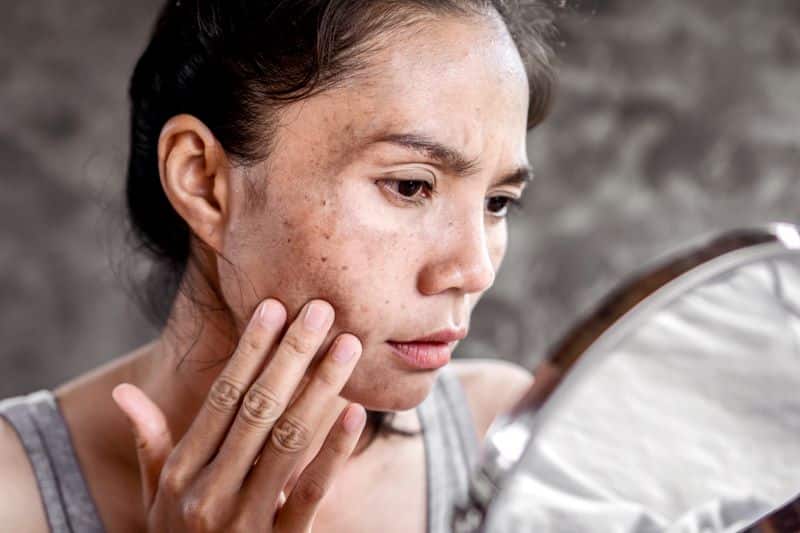- Home
- Product
- Patient
- Order Online
- Prescription Quote
- Collect at your Pharmacy
- Find a Pharmacy
- Find a Integrative Doctor
- Track my Medicine
- What is a Compounding Pharmacy?
- Child Friendly Medication
- Vet & Animal Compounding
- Easy to Swallow Pills
- Motion & Seasickness
- Medication without the Additives
- Unavailable Medications
- Schedule 8 Shipping Waiver
- Pharmacists
- Prescribers
- Shop
- FAQs
- About
- Careers
- Contact Us
- Home
- Product
- Patient
- Order Online
- Prescription Quote
- Collect at your Pharmacy
- Find a Pharmacy
- Find a Integrative Doctor
- Track my Medicine
- What is a Compounding Pharmacy?
- Child Friendly Medication
- Vet & Animal Compounding
- Easy to Swallow Pills
- Motion & Seasickness
- Medication without the Additives
- Unavailable Medications
- Schedule 8 Shipping Waiver
- Pharmacists
- Prescribers
- Shop
- FAQs
- About
- Careers
- Contact Us
Can Hydroquinone really get rid of sun spots?

Sun spots, often called age spots, are small, dark discoloured patches on the skin that can sometimes look like overgrown freckles. They usually appear on the face but can show up anywhere on the body.
Sun spots pose no threat to a person’s heath, however some people feel self-conscious about their big brown blotchy friends, especially if they rapidly increase in number. As always, prevention is better than cure, however there are ways to minimise the appearance of sun spots when they do occur, and one of these ways is through the application of Hydroquinone.
What causes sun spots?
Sun spots are a type of hyperpigmentation of the skin known as melasma. While some types of melasma can be caused by hormonal changes, (for example, during pregnancy), sun spots are caused by exactly what it says on the tin – the sun. And in particular; prolonged, unprotected exposure to the sun over many years.
How can you prevent sun spots?
The only effective way of preventing sun spots is through good sun safety practices. Avoid going into the sun during the hottest parts of the day, and always wear a hat and high spectrum sunscreen when outdoors.
How does Hydroquinone get rid of sun spots?
Hydroquinone doesn’t actually remove sun spots, however it does fade them to a degree that they become barely noticeable.
Hydroquinone works by slowing production of melanin in the skin by decreasing the number of melanocytes – the cells that produce melanin – present in the lower levels of the epidermis. Melanin is a complex polymer that gives colour to our hair, eyes and skin and is also a super absorber of damaging ultraviolet waves from the sun.
Sun spots are areas of hyperpigmentation, where melanin levels are high, so by supressing production of melanin in that specific area, Hydroquinone effectively fades the discolouration that shows on the outer layers of the skin.
How do you use Hydroquinone?
Hydroquinone should only be applied directly to the area of skin affected by sun spots, so that skin tone evens out over time. It should be applied once a day for maximum results, and the user may start seeing results between 1-3 months.
Sunscreen should always be worn when using Hydroquinone as sun exposure can reverse the gains made by the treatment.
Hydroquinone can be purchased over the counter at pharmacies in concentrations of 2%, with doctors and dermatologists sometimes prescribing it at higher doses for stubborn cases.
What are the side effects?
Hydroquinone is generally considered safe for use at low concentrations, which is why it is available over the counter in Australia. A skin patch test should always be conducted first and if excessive itching or burning is experienced, use of the product should be discontinued.
People with very sensitive skin may experience some redness or dryness at first, however generally the product is well tolerated by most people.
It’s recommended that Hydroquinone should not be used for more than 5 consecutive months at a time as there is an extremely small chance it may lead to a rare condition called ochronosis that causes a blue/black pigmentation in the skin.
Note from National Custom Compounding: In consultation with a prescribing physician or dermatologist, we can make up specific concentrations of Hydroquinone for sufferers of sun spots. For more information and no obligation advice contact us on 1300 731 755 or [email protected].
